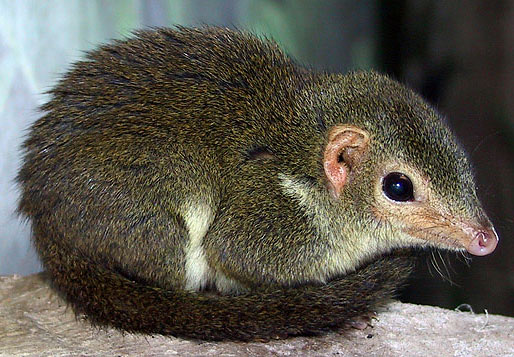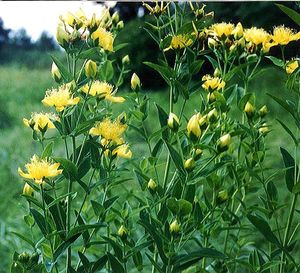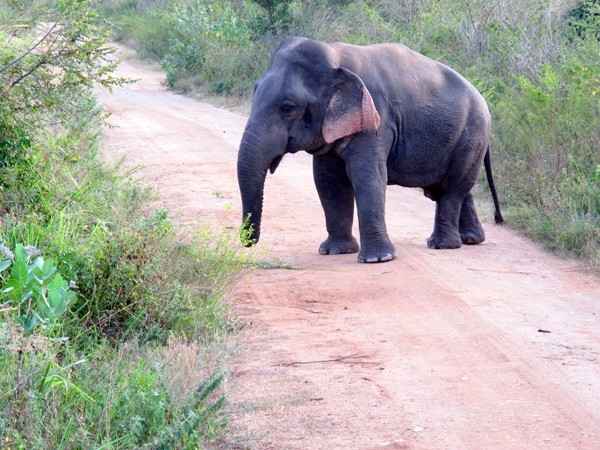SouthernKing
crickety cricket
Hello, and welcome!
Cradle of the Snake is set on a world that is quite similar to Earth, almost identical in all aspects. The exception is where we are playing: a landmass that I will refer to out-of-character as Lemuria. Lemuria is a lush, tropical land, located in the heart of what we would call the central Indian Ocean. The map will be limited to our sole little continent; it resembles a "cradle" game in that respect, only that the map is unlikely to ever expand.
This game is about trying to create the story of Lemuria from near the dawn. We will start at the end of the last ice age, with the arrival of anatomically modern humans on our continent, and we will hopefully progress through eras as states rise and fall, as cultures flourish and shift, as knowledges progress and decay. (My ultimate goal is to reach some equivalent to the twentieth century.) Since this is in a world much like ours, and since the history of the world outside Lemuria will unfold identically to real life (unless, of course, you change that), we may find ourselves facing the entrance of familiar peoples and things - or, possibly, not so familiar peoples and things. The setting will drastically change with the passage of time.
This game is inspired partly by Caveman2Cosmos, and especially by certain wonderful things run over in the Never Ending Stories subforum--such as Daftpanzer’s Alternate Timeline Building Experiment, Lord_Iggy’s MigratioNES, and NESLife--and will run along the same lines as those. This not a game about empires or nations or kings or presidents or petty politics. Rather, it is a game about people and cultures, and how they change and regenerate over time. This is not a competitive game; if it becomes competitive, I will have failed. Rather, it is an experiment in attempting to tell a history.
If all this somehow seems familiar, that’s because it is. Some time ago, I tried running a rather more complex fresh-start game with a vaguely identical, only to vastly underestimate just how much effort and/or work that was going to be. Aside from some of Iggy’s ideas (which were too good not to reuse), I’m not going to link that because I don’t particularly want this to be judged on that stillbirth.
However, I realised that I could very well rework that into something I could run with relatively minimal upkeep: something I can do with just writing and a few maps, while my computer situation (and life) are both too messy to deal with The Web of Fear (which I will most certainly return to, once everything settles in.)
Thanks to Lord_Iggy, Double A, and thomas.berubeg (either with this game or with its last iteration)
Anyway, here goes:
Rules
We begin with the arrival of the first group of anatomically modern humans in Lemuria: in 9500 BCE, about 11,500 years before the present. The first few updates will encompass centuries, if not millennia, in one go, as people spread across the continent--although we will gradually slow down as we leave the Paleolithic behind, as agriculture and sedentary life develops.
Orders are simple, posted publicly in-thread, and are broad-strokes. Pick one particular group, and tell me the directions you’d like to take them in. As long as you have the tools and conditions to do so, the possibilities are open-ended: you can migrate; you split off and create someone new; you can go to war; you could even stay in place and build and develop.
For many things, a short few sentences to a paragraph should suffice. You can, of course, go into detail about language, sociology, cultural practises, religions, material culture, knowledge, technological advances, et cetera. I encourage it, and I’ll try to include such things in the update.
You can stay with one lineage of people, or you can bounce around and influence things all over the place. Remember, this is a world of ephemerals, and nothing will last; your goal is to leave something behind, to be remembered. There will be plagues and cataclysms from time to time, and I may even announce them in the updates. You can even create acts of god yourself, within reason, if you like.
Very basic sample orders for the era we’re currently in:
A group called the Reusians will break off from the Proto-Lemurians and migrate southwards, into the foothills of the mountains. Scarcity of resources means that the Reusians will start developing a system of ritual cannibalism. They will also start developing a tradition of cave-painting.
I do reserve the right of final judgment, though I hope to use it as little as possible, and I’ll try to talk to you about this.
There is a world outside Lemuria; we are, after all, on Earth. The rest of the world’s history will unfold as per our own familiar history--unless you directly influence it. Occasionally, as history evolves, such outsiders will arrive on the island as well: as lost souls, as traders bringing foreign things, as migrants bringing new people and new cultures--even as invaders. We will deal with these as they come.
Please don't bring external drama or forum politics into this. I have extremely little tolerance for such things, and will have you fed to the reptiles.
There are no stats. If you’ve seen any of the games I mentioned in the above post this should be familiar to you.
If you are intimidated, or have any questions, don't hesitate to ask me--I'm always happy to help!
Cradle of the Snake is set on a world that is quite similar to Earth, almost identical in all aspects. The exception is where we are playing: a landmass that I will refer to out-of-character as Lemuria. Lemuria is a lush, tropical land, located in the heart of what we would call the central Indian Ocean. The map will be limited to our sole little continent; it resembles a "cradle" game in that respect, only that the map is unlikely to ever expand.
This game is about trying to create the story of Lemuria from near the dawn. We will start at the end of the last ice age, with the arrival of anatomically modern humans on our continent, and we will hopefully progress through eras as states rise and fall, as cultures flourish and shift, as knowledges progress and decay. (My ultimate goal is to reach some equivalent to the twentieth century.) Since this is in a world much like ours, and since the history of the world outside Lemuria will unfold identically to real life (unless, of course, you change that), we may find ourselves facing the entrance of familiar peoples and things - or, possibly, not so familiar peoples and things. The setting will drastically change with the passage of time.
This game is inspired partly by Caveman2Cosmos, and especially by certain wonderful things run over in the Never Ending Stories subforum--such as Daftpanzer’s Alternate Timeline Building Experiment, Lord_Iggy’s MigratioNES, and NESLife--and will run along the same lines as those. This not a game about empires or nations or kings or presidents or petty politics. Rather, it is a game about people and cultures, and how they change and regenerate over time. This is not a competitive game; if it becomes competitive, I will have failed. Rather, it is an experiment in attempting to tell a history.
If all this somehow seems familiar, that’s because it is. Some time ago, I tried running a rather more complex fresh-start game with a vaguely identical, only to vastly underestimate just how much effort and/or work that was going to be. Aside from some of Iggy’s ideas (which were too good not to reuse), I’m not going to link that because I don’t particularly want this to be judged on that stillbirth.
However, I realised that I could very well rework that into something I could run with relatively minimal upkeep: something I can do with just writing and a few maps, while my computer situation (and life) are both too messy to deal with The Web of Fear (which I will most certainly return to, once everything settles in.)
Thanks to Lord_Iggy, Double A, and thomas.berubeg (either with this game or with its last iteration)
Anyway, here goes:
Rules
We begin with the arrival of the first group of anatomically modern humans in Lemuria: in 9500 BCE, about 11,500 years before the present. The first few updates will encompass centuries, if not millennia, in one go, as people spread across the continent--although we will gradually slow down as we leave the Paleolithic behind, as agriculture and sedentary life develops.
Orders are simple, posted publicly in-thread, and are broad-strokes. Pick one particular group, and tell me the directions you’d like to take them in. As long as you have the tools and conditions to do so, the possibilities are open-ended: you can migrate; you split off and create someone new; you can go to war; you could even stay in place and build and develop.
For many things, a short few sentences to a paragraph should suffice. You can, of course, go into detail about language, sociology, cultural practises, religions, material culture, knowledge, technological advances, et cetera. I encourage it, and I’ll try to include such things in the update.
You can stay with one lineage of people, or you can bounce around and influence things all over the place. Remember, this is a world of ephemerals, and nothing will last; your goal is to leave something behind, to be remembered. There will be plagues and cataclysms from time to time, and I may even announce them in the updates. You can even create acts of god yourself, within reason, if you like.
Very basic sample orders for the era we’re currently in:
A group called the Reusians will break off from the Proto-Lemurians and migrate southwards, into the foothills of the mountains. Scarcity of resources means that the Reusians will start developing a system of ritual cannibalism. They will also start developing a tradition of cave-painting.
I do reserve the right of final judgment, though I hope to use it as little as possible, and I’ll try to talk to you about this.
There is a world outside Lemuria; we are, after all, on Earth. The rest of the world’s history will unfold as per our own familiar history--unless you directly influence it. Occasionally, as history evolves, such outsiders will arrive on the island as well: as lost souls, as traders bringing foreign things, as migrants bringing new people and new cultures--even as invaders. We will deal with these as they come.
Please don't bring external drama or forum politics into this. I have extremely little tolerance for such things, and will have you fed to the reptiles.
There are no stats. If you’ve seen any of the games I mentioned in the above post this should be familiar to you.
If you are intimidated, or have any questions, don't hesitate to ask me--I'm always happy to help!
















